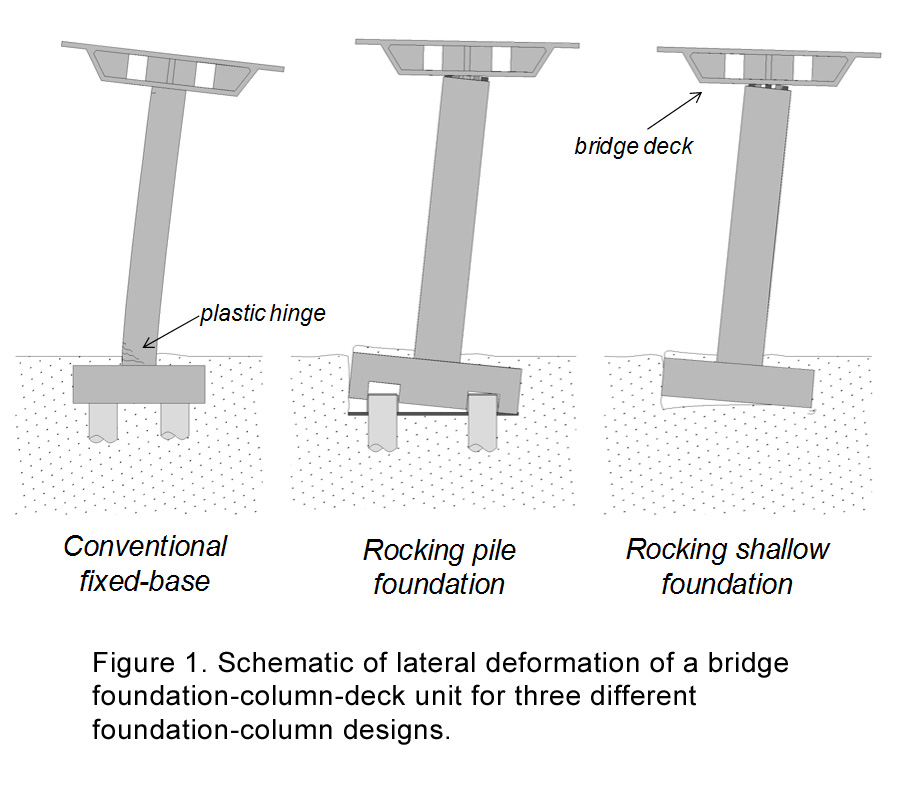Conventionally designed bridges rely on the concept of ductility, whereby the column reinforcement is detailed to ensure the development of flexural plastic hinges at the base and the top of the columns. While bridges designed in this manner may be safe from collapse, they are susceptible to considerable damage and permanent lateral displacements that can impair traffic flow and necessitate costly, time consuming, dangerous, and disruptive inspections and repairs. As an alternative design, bridges with columns supported on rocking foundations may develop large nonlinear deformations when subjected to strong shaking but experience far less damage in the columns, with the added bonus of these columns that re-center following a high-intensity earthquake ground motion.
The experiment, as part of this research project funded by Caltrans, tests two columns supported on shallow foundations. The shake table tests of the specimens use the large soil confinement box (LSCB) of NEES@UCSD (inner dimensions of 10.1 m length, 5.6 m width, and 7.6 m height). The tests will be conducted using dry soil and soil including water.

Investigators
| PI | M. Panagiotou | University of California, Berkeley |
| Co-PI | P. Fox | University of California, San Diego |
| Co-PI | J.I. Restrepo | University of California, Davis |
| Co-PI | B. Kutter | University of California, Berkeley |
| Co-PI | S. Mahin | University of California, San Diego |
| Graduate Student Researcher | G. Antonellis | University of California, Berkeley |
| Graduate Student Researcher | A. Gavras | University of California, Davis |
| Graduate Student Researcher | G. Guerrini | University of California, San Diego |
| Graduate Student Researcher | A. Sanders | University of California, San Diego |
Contact Person
Marios Panagiotou
panagiotou@berkeley.edu